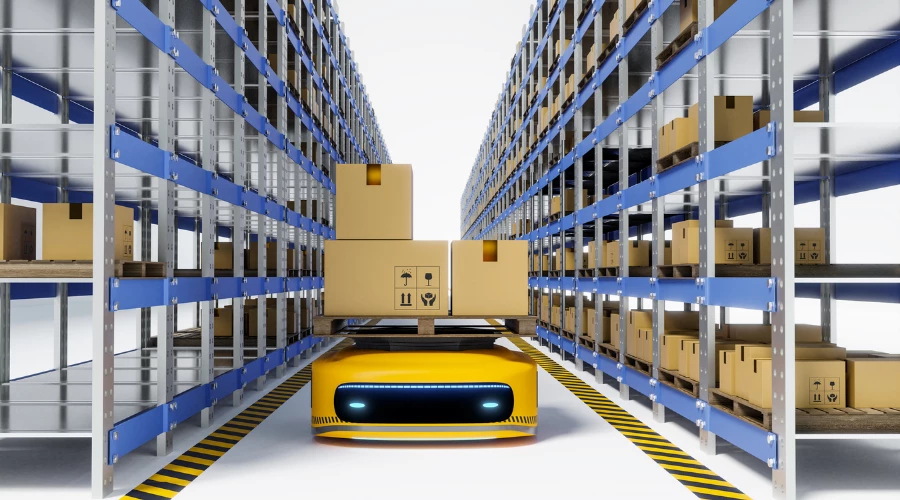
Revenue and deployment of Robotics-as-a-Service (RaaS) solutions are increasing at a faster pace than those from traditional robot purchases. This is because end-users realize securing robotic solutions through RaaS provides more excellent value than simply investing in equipment.
Warehouse managers and supply chain leaders are interested in acquiring robot automation and automation technologies, but the high capital investments and expertise required can make it challenging to adopt. To overcome this, robotics companies are following the software as a service (SaaS) industry trend and offering solutions to robotics as a service (RaaS). Just as companies use SaaS to adopt software solutions efficiently, RaaS models provide a cost-effective, scalable, and low-risk way to deploy robots in warehouses without additional infrastructure or extensive training.
Researchers predict that Robotics as a Service (RaaS) will significantly contribute to the widespread adoption of robot automation and estimate that there will be over 1.3 million RaaS deployments globally by 2026. The largest installations are expected in logistics, manufacturing, and hospitality. As end-users realize the benefits of securing robotic solutions rather than just purchasing equipment, RaaS revenues and deployments rapidly surpass traditional robot purchases.
Many large retailers are looking for robotics to improve efficiency in their distribution centers; recently, Amazon acquired Kiva Systems for $775 million in 2012 to bring its warehouse robotics systems in-house. But for most organizations, developing and managing the technology under their roof is neither practical nor cost-effective.
“It’s not just the cost of the robot. It’s the cost of the knowledge and expertise to develop and maintain the whole process.
E-commerce is a constantly evolving and highly competitive industry, making it challenging for warehouse robotics to accurately forecast their long-term needs due to seasonal trends, scalability, and proximity to customers. Robotics as a Service (RaaS) provides a solution by reducing uncertainty and technological barriers to adoption, allowing customers to deploy robots for warehouses without high upfront costs.
In industry, investing in a system with a three- to five-year payback is typically hard because they might have an entirely different operation. "More options for robotic solutions are increasingly needed."
Implementing scalable delivery models allows warehouse and supply chain managers to introduce robots flexibly, with reduced risk. In contrast to conventional technology deployments that may require over 18 months of planning and installation, RaaS providers can help customers begin operations in weeks. Frequently, warehouses start with a trial of a few robots and gradually increase the number as required.
Warehouse solutions provided by RaaS necessitate minimal infrastructure and can be easily installed in any facility. Robotics allows for an automated picking system, which manages a network of picker robots capable of independently transferring inventory from one location to another. These robots for warehouses are compact, measuring two feet in height and width, and can reach up to eight feet high while carrying standard totes that weigh up to 40 pounds.
According to the statement, the RaaS solutions provided by Fetch do not require significant infrastructure changes. The robots can autonomously pick inventory by adding labels to the shelves. Fetch's VirtualConveyor Autonomous Mobile Robots (AMRs) can perform various tasks in an e-commerce warehouse, including case picking and pallet movement. The HMIShelf robots can carry a variety of bins and totes and can be adapted to various facilities within a few days, thanks to their customization and configuration options.
Besides enhancing efficiency, RaaS can aid the human workforce in the supply chain, where labor shortages have become a growing problem. With RaaS, warehouses can expand working hours more effortlessly and cope with surges during peak periods without the added intricacy of recruiting more employees. Additionally, it can help fill the staffing gaps when labor is scarce.
RaaS providers generally can remotely oversee robots through cloud-based technology, guaranteeing optimum performance and software updates. This feature removes the warehouse operator's need for maintenance or management tasks. Any minor problems can typically be detected and resolved automatically and remotely, and a technician is dispatched only when necessary.
To meet the demands of an ever-growing e-commerce market, warehouse management must find automation solutions that are both effective and cost-efficient., 13SQFT can assist you in this situation by offering various automation options on a shelf that are best suited for your business and improve your performance in the supply chain.
POSTED BY
Team 13SQFT